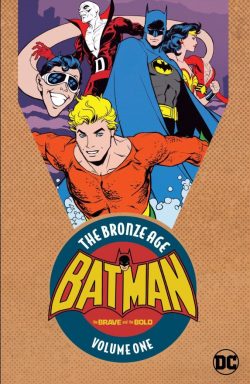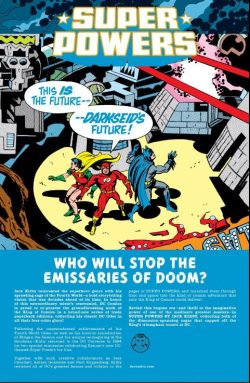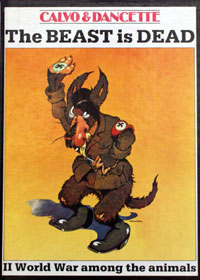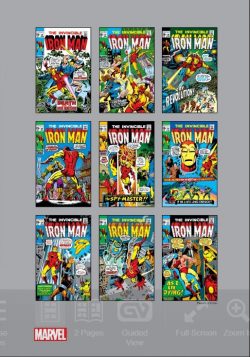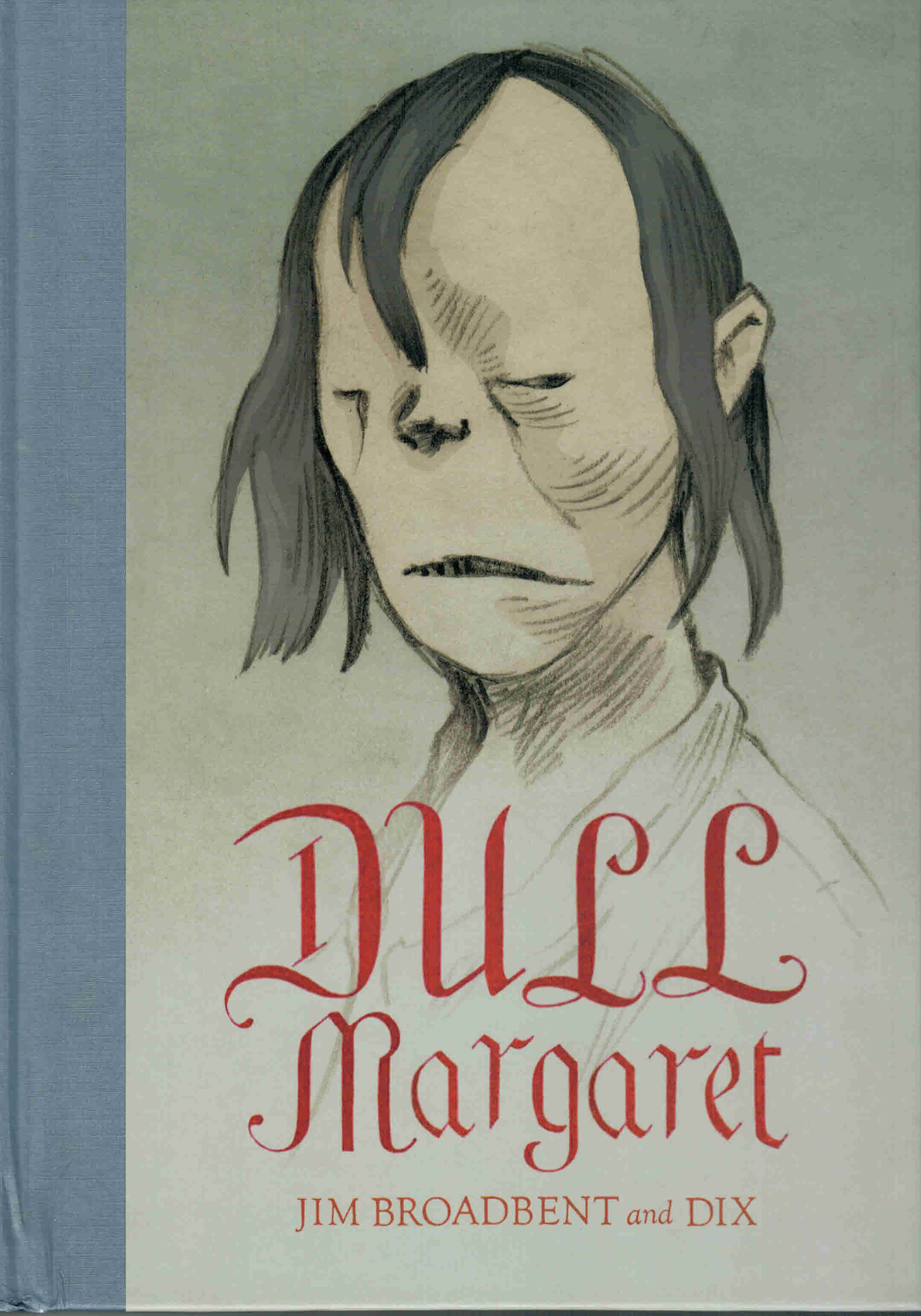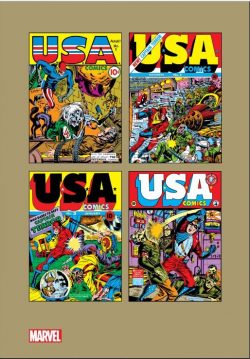
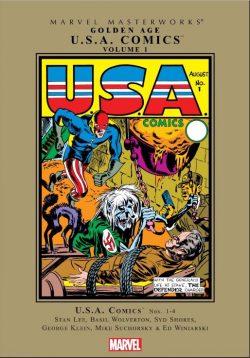
By Phil Sturm, Stan Lee, Pierce Rice, Al Avison, Al Gabriele, Basil Wolverton, Syd Shores, George Klein, Charles Nicholas, Howard Purcell, Arthur & Louis Cazeneuve, Arthur Cazeneuve, Mike Suchorsky, Ed Winiarski, Frank Giacoia, Carmine Infantino & various (Marvel)
ISBN: 978-0-7851-2478-8
DC was quick off the mark in transferring their Golden Age canon into luxurious archive formats, whereas it took their greatest rival quite a while to commit its earliest output to paper (and latterly digital formats). One reason for that might be the unsavoury fact that a great deal of Marvel Comics’ Timely and Atlas output is both dated and frequently painfully strident, and even histrionically offensive, to modern eyes and sensibilities.
Even so, I’d rather have the raw historical form rather than any bowdlerised or censored reworking and even in their most jingoistic and populist excesses there are usually individual nuggets of gold amidst the shocking or – horror of horrors! – poorly crafted yarns from the House of Ideas’ antediluvian antecedents.
Marvel have thankfully caught up now with most of their pre-1960’s output, and there’s quite a lot to be said for putting the material in sturdy archival hardbound volumes for those early comic adventures. I must admit that when they were good the individual efforts could be very good indeed…
The quarterly USA Comics launched with an August 1941 cover-date and the four complete issues collected here reveal a period of intense experimentation and constant change as the eager neophyte publisher weaned themselves away from the “comics shop†freelancers-for-hire production system and began to build a stable – or bullpen – of in-house creators.
Since these stories come from a time of poor record-keeping, frantic scrabbling to fill pages and under the constant threat of losing staff and creators to the war-effort, the informative introduction discussing the lack of accurate creator detail and best-guess attributions from diligent and dedicated comics historian Dr. Michael J. Vassallo is a godsend for interested fans.
With covers (by Joe Simon & Jack Kirby) and House ads reproduced throughout, the World War Wonderment and Patriotic Perils begin with The Defender illustrated by Al Avison, Al Gabriele, Joe Simon and diverse unknown hands (who might or might not have been Sam Cooper, Al Fagaly, George Klein & Charles Wojtkoski AKA “Charles Nicholasâ€).
This short-lived sentinel of liberty was another flag-clad patriotic mystery-man who, with designated boy sidekick Rusty, here smashes a band of Nazi-backed river pirates plaguing Manhattan’s waterways.
Next comes the utterly outrageous origin of The Whizzer (by Avison & Gabriele) which saw young Bob Frank gain super-speed after his dying father injects him with mongoose blood to counteract jungle fever and snakebite.
Orphaned and vengeful, the young man dedicates his life to stopping criminals such as the thugs who had forced his ailing parent to hide and die in a tropic hellhole…
‘Mr. Liberty debuted in ‘The Spirits of Freedom’ by Phil Sturm, Syd Shores, & Klein as, with war erupting everywhere, history Professor John Liberty is visited by the ghosts of American patriots past who offer him supernatural assistance to stamp out all threats to democracy.
After Arthur Cazeneuve’s prose crime-thriller ‘Haunted Fireplace’ the astonishing Rockman: Underground Secret Agent blazes into action in ‘The Tunnel That Led to Death’. Crafted by the incomparable Basil Wolverton – but with a splash page drawn by Nicholas – this esoteric yarn introduces an anti-fascist defender of democracy from Abysmia; a super-scientific kingdom situated miles below American soil. Their king is determined to safeguard his upstairs neighbours from tyranny and oppression…
Working as Michael Robard, Howard Purcell then stylishly introduces ‘Young Avenger’: a junior superman summoned by mystic voices to battle spies and saboteurs, before arctic elemental ‘Jack Frost’ springs to life to avenge a murder on ice in a classy origin yarn by Stan Lee & Nicholas.
This polar opposite to the Human Torch (I’m such a wag, me) travels to New York and soon occupies the same well-intentioned/hunted menace/anti-hero niche pioneered by both the blazing android and the Sub-Mariner: a much-used formula still effective to this day…
USA #2 (November 1941) premiered a new, nautically-themed costumed crusader in ‘Captain Terror Battles the Fiends of the Seas’ (by Mike Suchorsky). Retired gentleman adventurer Dan Kane returns to a masked identity he had adopted during the Spanish War to hunt down a Nazi destroyer haunting American waters in an action-packed, extra-long exploit.
Then, with the Allied effort increasing on all fronts in the real world, civilian “Mr.†becomes ‘Major Liberty’ (by Shores & Klein) to crush a monster-making Nazi who transforms a peaceful Caribbean resort into ‘The Island Menace!’
Ed Winiarski then introduces Assistant District Attorney Murphy who opts to crush Home Front racketeers disguised as gaudy tramp Chauncey Throttlebottom III AKA ‘The Vagabond’ after which ‘The Defender’ (by Klein) takes Rusty south of the border to quash a plot to destabilise the USA’s South American allies.
A text piece describing ‘When USA Heroes Meet!’ by Stan Lee is followed by another Wolverton Rockman stunner wherein the Subterranean Supremo tackles Zombo the Hypnotist whose mesmeric powers makes men slavish ‘Killers of the Sea’.
After an uncredited ‘Jack Frost’ exploit finds the freezing fugitive avoiding cops but still destroying a marauding robot octopus ship, ‘The Whizzer’ – sadly also unattributed – ends a string of murders by jockey-fixers ruining the horse-racing industry.
USA Comics #3 (January 1942) commences with Suchorsky’s ‘Captain Terror and the Magic Crystal of Death’, as the bold buccaneer spectacularly smashes a sabotage ring organised by wicked ersatz gypsies, before Major Liberty faces – or rather doesn’t, if you get my point – a cunning killer masquerading as ‘The Headless Horseman’ (Shores & and an unnamed assistant) and Winiarski’s delightful Vagabond demolishes yet another would-be kingpin of crime.
Once The Defender finishes off a hyperthyroid maniac dubbed ‘The Monster Who Couldn’t be Stopped!’ (Klein), Lee’s prestidigitation prose piece ‘Quicker than the Eye!’ gives way to the latest Rockman instalment which he’d scripted for Nicholas to illumine; a broad fantasy set in Jugoslavia where the beauteous Princess Alecia has been abducted by evil pixies: Object: Matrimony!
Young wannabes Frank Giacoia & Carmine Infantino got a big boost to their careers when they illustrated the anonymously-scripted Jack Frost yarn involving strong-arm thugs forcing hospitals to buy their adulterated black market drugs and, after an engaging ‘Unsolved Mysteries’ feature page (which included who created it), Winiarski debuts Tom ‘Powers of the Press’ – a reporter and refreshingly plainclothes hero who, with the aid of diminutive photographer Candid Kenny Roberts, tracks down murderous payroll bandits to explosively end the third issue.
Major Liberty takes the cover and lead spot in USA #4 (May 1942), using his ghostly gifts to smash a gang of spies and infiltrators terrorising German-born Americans in a breathtaking romp from Shores & his unknown collaborator, after which Jack Frost battles deranged cryogenics researchers in ‘The Adventure of the Frozen Corpses’ – attributed to Pierce Rice & Louis Cazeneuve.
Next up, The Defender foils the maker of a deadly artificial fog, assisted as ever by Rusty and the skilled artistic endeavours of George Klein and others.
The Vagabond (by Winiarski and an unknown assistant) found the Faux Hobo exorcising a haunted castle in pursuit of a Mad Monk and loot from a decades-old cold case, after which anonymously-penned text thriller ‘Diamond of Juba’ precedes another Suchorsky Captain Terror tale, which sees the seaborne stalwart smashing a Nazi plot to starve Britain into submission.
The uncredited Rockman story details the Underworld Agent countering murder and banditry in Alaska, after which the equally unattributable Corporal Dix debuts in a stirring tale of a soldier on leave who still finds some time to close down a gang of cheap hoods and set his own wastrel brother on the right and patriotic path…
This premier collection then ends on a riotous high note as The Whizzer (by Howard James) finally comes up to full speed in a riotous action romp with the Golden Rocket crushing a gang of thieves targeting a brilliant boy-inventor.
Raw, boisterous and engagingly enthusiastic, these primal pulp exploits laid the groundwork for today’s superhero-saturated masked media darlings, and still impart a tangible frisson of straightforward, no-nonsense thrills, spills and chills to satiate every action fan’s every desire.
© 1941, 1942, 2007, 2018 Marvel Characters, Inc. All rights reserved.




